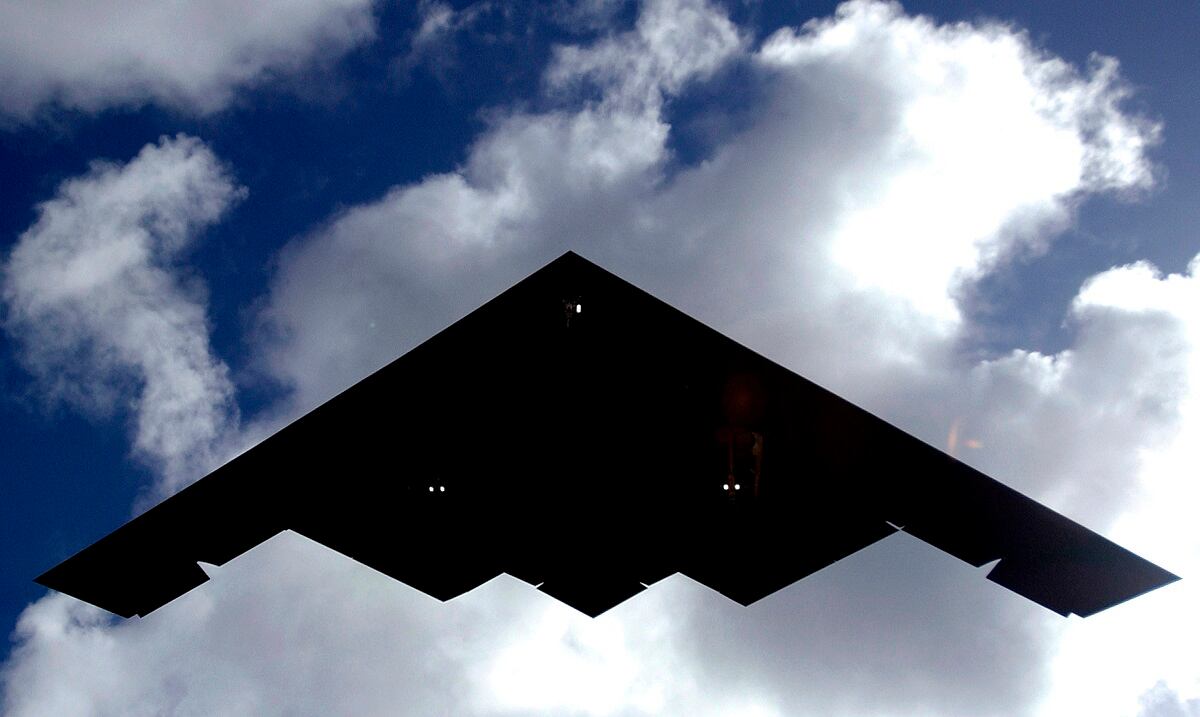About a week after the Air Force deployed three B-2 Spirit stealth bombers to Guam, six B-52H Stratofortress bombers joined them on the island Tuesday.
The B-52s from Barksdale Air Force Base, Louisiana deployed to Andersen Air Force Base along with about 300 airmen. The aircraft and personnel will support the U.S. Pacific Command’s continuous bomber presence mission, replacing six B-1B Lancer bombers, which are scheduled to return home to Ellsworth Air Force Base, South Dakota, at the end of this month.
But for a few days at least, all three types of bombers — the nuclear-capable B-2s and B-52s and the conventional B-1Bs — will be flying together out of the U.S. territory in the Pacific, just the second time that has happened, according to a Pacific Air Forces news release. The first time was in August 2016 as part of an historic integrated bomber operation.
The B-2 Spirits and about 200 airmen, assigned to the 509th Bomb Wing at Whiteman Air Force Base in Missouri, arrived Jan. 8 in support of U.S. Pacific Command’s bomber assurance and deterrence mission.
“U.S. Strategic Command bombers regularly rotate through the Indo-Pacific region to conduct U.S. PACOM-led air operations, providing leaders with deterrent options to maintain regional stability,” according to a Pacific Air Forces news release. “During this short-term deployment, the B-2s will conduct local and regional training sorties and will integrate capabilities with key regional partners, ensuring bomber crews maintain a high state of readiness and crew proficiency.
RELATED

The continuous bomber presence mission has been conducted since 2004 to reassure the United States’ allies in the region and show strength against potential adversaries, including China and North Korea.
The B-52H Stratofortress can fly at high subsonic speeds at altitudes of up to 50,000 feet, according to the Air Force.
The bombers are capable of dropping or launching the widest array of weapons in the U.S. inventory. These weapons include gravity bombs, cluster bombs, precision-guided missiles and Joint Direct Attack Munitions.
The bombers’ presence in Guam comes as tensions remain high between the United States and North Korea due to the North’s determination to continue developing its nuclear weapons and ballistic missiles.
Officials from North and South Korea have been talking ahead of next month’s Winter Olympic Games in the South. But relations between the United States and North Korea have remained frosty.
After a new year’s address in which North Korean leader Kim Jung Un claimed his missiles could hit the U.S. mainland and that the nuclear button was always within his reach, President Donald Trump on Jan. 2 tweeted that his nuclear button “is a much bigger & more powerful one than his, and my Button works!”
North Korea this week described Trump’s tweet as the “spasm of a lunatic.”
While the U.S. and South Korea have agreed to postpone any regularly scheduled military exercises until after the Olympics, the Air Force said it will continue to provide “routine” firepower in the region.
The B-1B Lancers, assigned to the 37th Expeditionary Bomber Squadron during their deployment, arrived on Guam Aug. 11, shortly after North Korea announced plans to launch ballistic missiles at the U.S. territory if provoked. On the day they arrived, Trump tweeted, “Military solutions are now fully in place, locked and loaded, should North Korea act unwisely. Hopefully Kim Jong Un will find another path!”
Over the past five months, Lancers have conducted a variety of joint and bilateral training missions with the U.S. Navy and Marine Corps, the Japan Air Self-Defense Force, Republic of Korea Air Force and Royal Australian Air Force, according to the Air Force news release.
Charlsy is a Reporter and Engagement Manager for Military Times. Email her at cpanzino@militarytimes.com.




